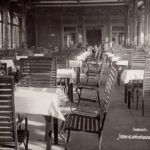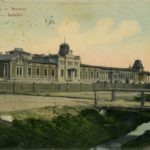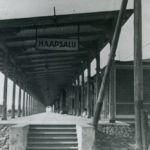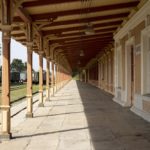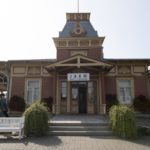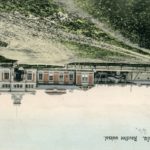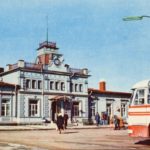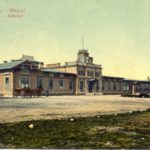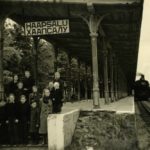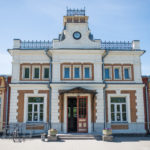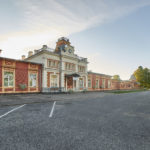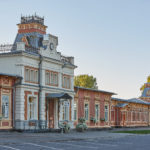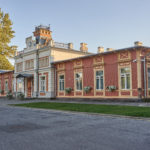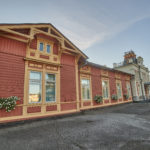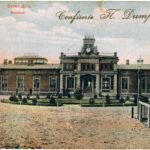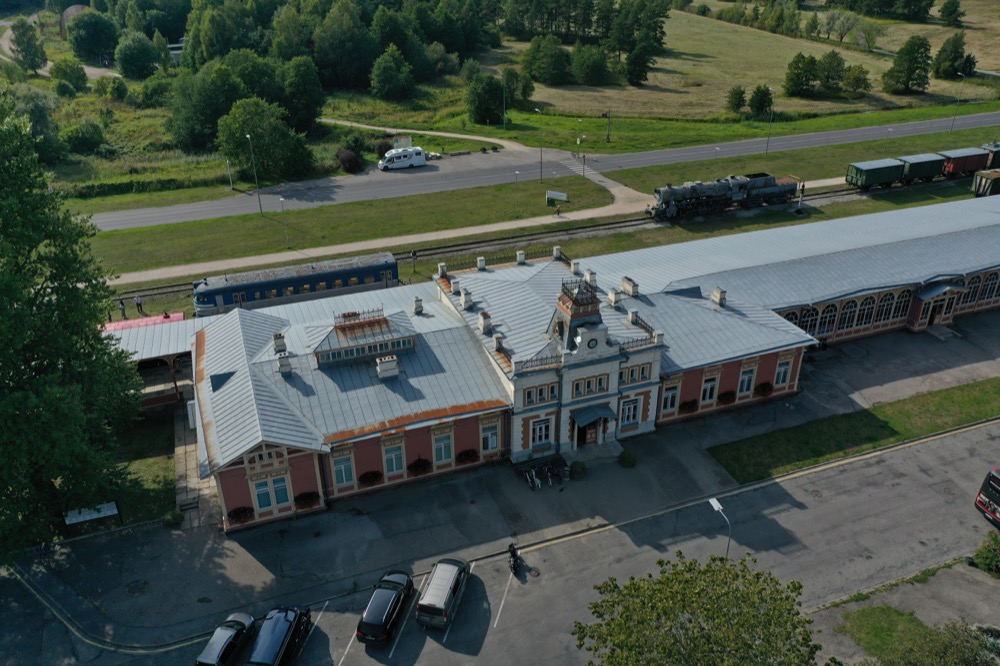
Haapsalu railway station – a gateway to a health resort
On 18 June (5 June by the old calendar) 1902, the Haapsalu Town Council decided to give land free of charge for building a new railroad and provide an area in the size of one dessiatin (1.09 ha) to build a railway station. ‘The Haapsalu railway station will be built on a clearing between the town and the Paralepa forest that is currently used by cyclists,’ the journalists reported on the new location of the station. Everyone knows that you should not look a gift horse in the mouth, but the press immediately started to point out all the flaws of the new location, ‘This land is not necessarily appropriate for the new station; the ground is low and tends to be flooded.’ On 9 September (27 August by the old calendar) 1902, as the land was not enough for a railway station, the Haapsalu Town Council provided more land for this purpose – a total of 10 dessiatins (10.9 ha). The filling and drainage of soil began. The construction of the station was overseen by Construction Division III of the Keila-Haapsalu railway, led by road engineer Erich von Landesen. In 1904, most of the buildings and structures of the station were completed. Alongside the provisional railway traffic that began at the end of the same year (28 December), the Haapsalu station started operating. As the construction had delayed, the station building was not yet completely ready. The historicist station building was designed by Prussian citizen Karl Werheim (or Wehrheim, 1840–1912) in Saint Petersburg. Werheim, an architect and an academic, gave the building its imperial exterior suitable for a resort and it was completed in the late fall of 1905. The Haapsalu station building was the only one in Estonia that had a large summer buffet, or a summer café, but also the imperial pavilion with its regal halls and an urbane 100-fathom (over 213 metres) platform with full-extent shades. The second-class station building actually conformed with first class requirements: in addition to the lobbies with a buffet, the water closets for ladies and gentlemen, the large hall, the ticket office, the station office, the Station Master’s cabinet and the telegraph room, there were also rooms for the mail department, the railway gendarme, and the royal family.
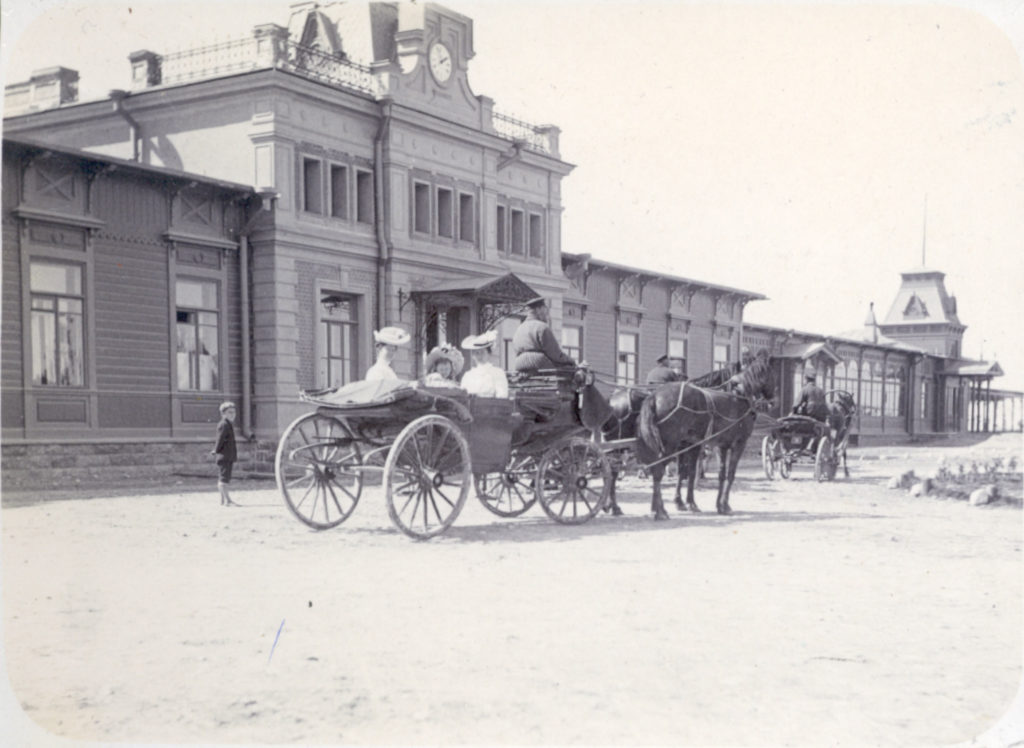
One of the final finished structures was the railway waterworks. Initially, water was directed to the Haapsalu train station water tower from Lake Mägari with a 4-kilometre water pipeline from the pumping station on the shore of the lake. In the spring of 1924, a new bore well was established by the water tower: it was 610 feet (185.9 metres) deep and provided the station with clean water. A new pumping station was established at the water tower. For a long time, an outpatient clinic operated at the Haapsalu station, providing medical help from Vasalemma to Rohuküla. A police officer, who also resided at the Haapsalu station, provided service to the same area. The Soviet law enforcement unit at the station was the transport militsiya. As was customary to a high-class station, it included a two-spot slate locomotive depot and a large turntable for steam locomotives with a 19.5-metre diameter. Formerly, there had been ten numbered rails, including the main rail, at the station. One was a dead end, heading straight to the Haapsalu Bay and used to shunt full-length multiple-unit trains. In addition to a rentable sales point at the station building – the so-called bookcase –, Haapsalu railway station’s public phone station was opened on 1 May 1925. The Haapsalu railway station’s postal agency was opened on 1 February 1933. In the Soviet era, an outdoor movie theatre and a guesthouse also operated there.
When the competing means of transport – public buses – became more common, Haapsalu needed a larger bus station. In the summer of 1961, the bus station was moved from its former location in Võidu (currently Posti) street to the railway station. The station square was redesigned and asphalted, and part of the railway station was given to the bus station. The bus station began operating at the railway station on 18 December 1961, making it the transport centre of the resort town, a central node of public transport. After the war, the class of the station was reduced and by 1970, it was ranked as a class III station. In 1970, the railway station’s water network was connected with the town water network and the water tower lost its initial function.
Over time, cars became more common, bus traffic increased, and the state of the railroads became poorer. By 1995, one function of the station, serving railway passengers, was lost. A year later, some objects of the station were municipalised: on 15 October 1996, the railway station along with its luggage rooms and platforms, some residential buildings of railway workers, establishments of freight and waterworks ,and the station square were given to the town of Haapsalu. AS Eesti Raudtee decided to end all commercial operations at the Haapsalu station and on 15 December 1997, it was closed down permanently as a station of Eesti Raudtee. The Riisipere-Haapsalu section was privatised in 1998 and un-municipalized properties were transferred to the new private owner of the railroad.
On 25 June 1997, the Tallinn Railway Museum moved to the Haapsalu Railway Station. In 2013, objects in the former station which were owned by the town were given to the Foundation of Haapsalu and Läänemaa Museums. The Railway and Communications Museum, a branch of the Foundation, has been operating at the station since 2014.
During its 93 years of operation, the Haapsalu Railway station has been led by:
Sergei Kaskelaine,
Rudolf Romm (1 October 1913 – 1 June 1916),
Nikolai Nossov (1 January 1917 – 1 June 1921),
Johannes Saarmann (June 1921 – 1 May 1923),
Johann Perg (1 July 1923 – 1 November 1930),
Aleksander Veljaminov (Viljaste, deputy 1 November 1930 – June 1931),
August Särm (1 June 1931 – 16 June 1938),
August-Johannes Sõnno (1 December 1938 – 4 January 1941 and 10 April 1947 – 16 January 1951),
Rudolf Räitsak (deputy 5 January 1941 – April 1941),
Aleksander Timusk (15 April 1941 – 25 March 1947),
Igor Laid (16 January 1951 – August 1951),
Heino Liht (August 1951 – 4 October 1968),
Voldemar Reichardt (deputy October 1968 – 14 December 1968),
Ivan Kappanen (December 1968 – August 1970),
Valentin Ossipov (28 August 1970 – 12 October 1989),
Natalja Kappanen (October 1989 – December 1997).
